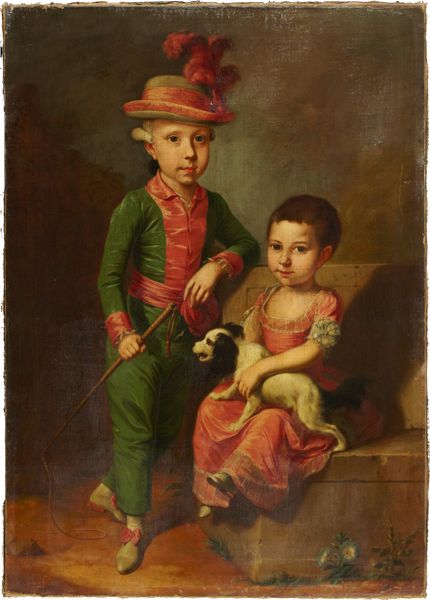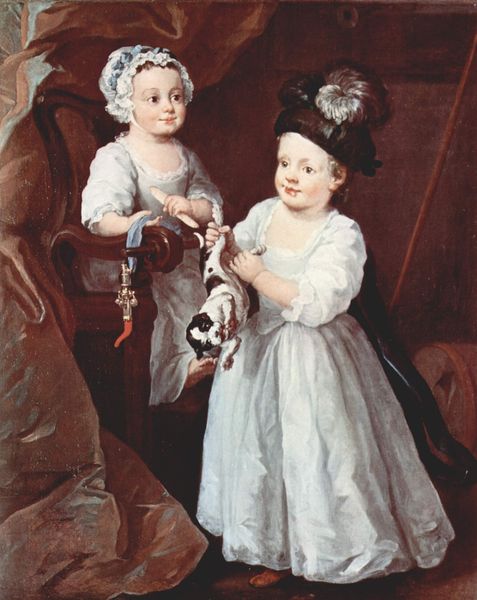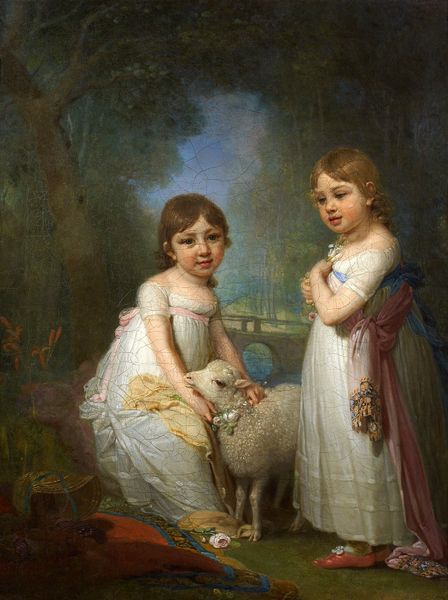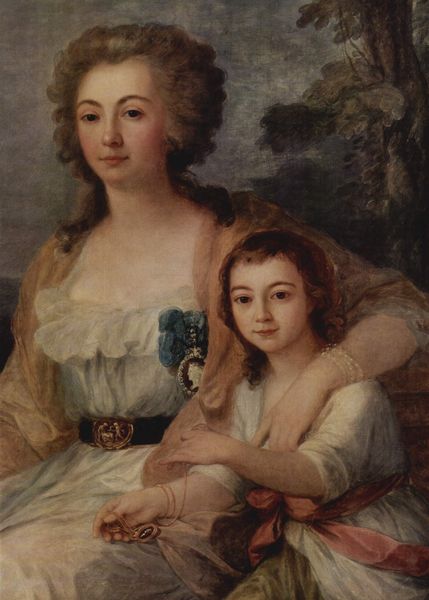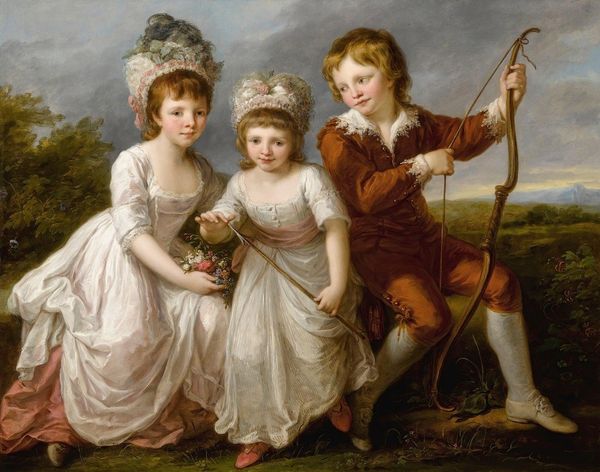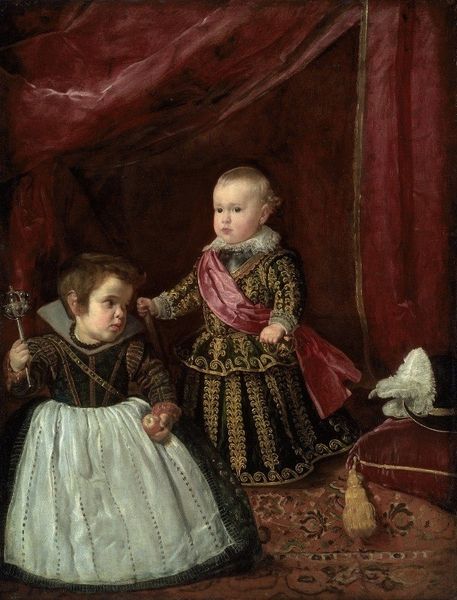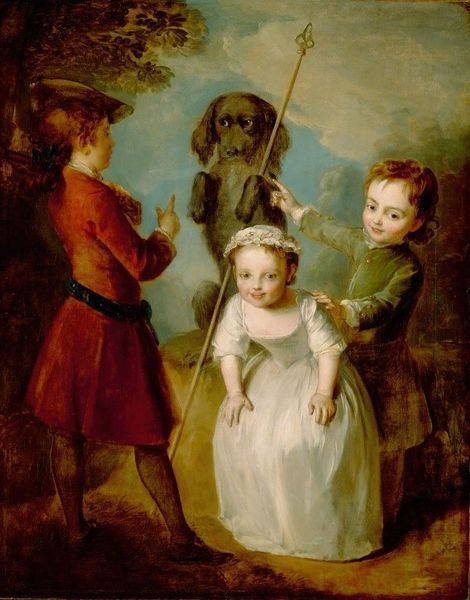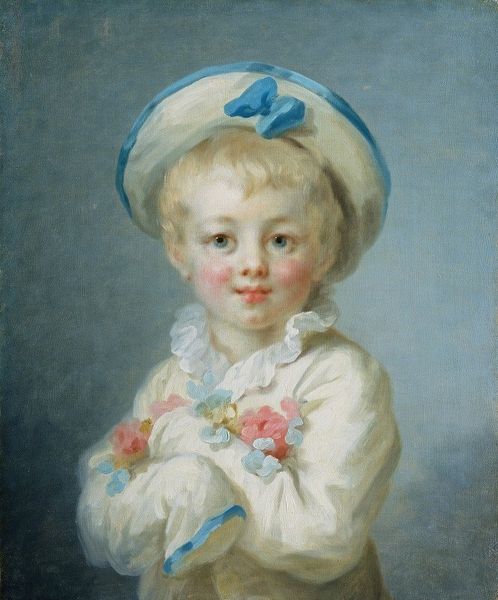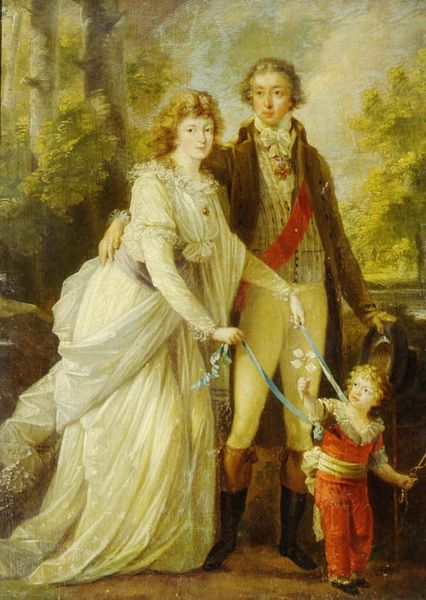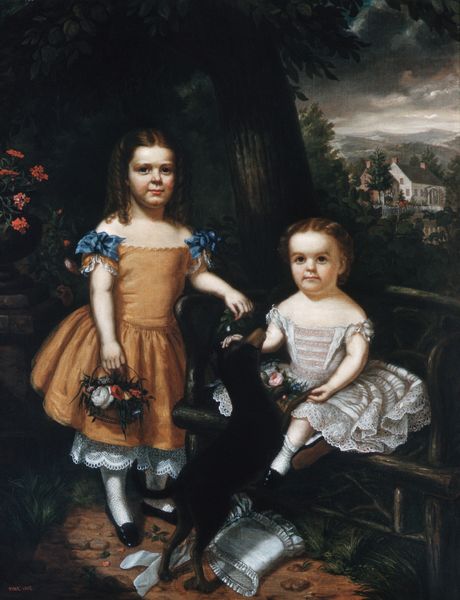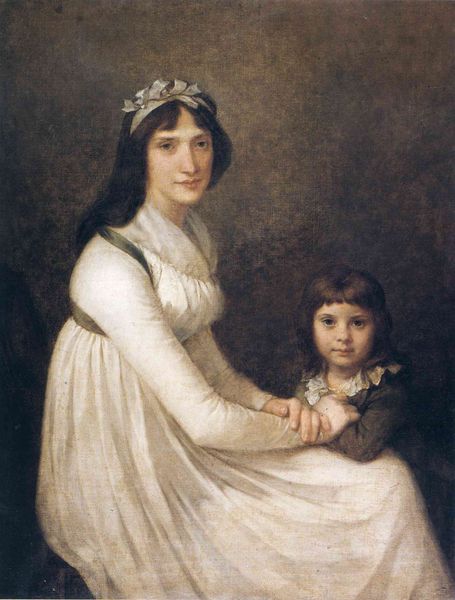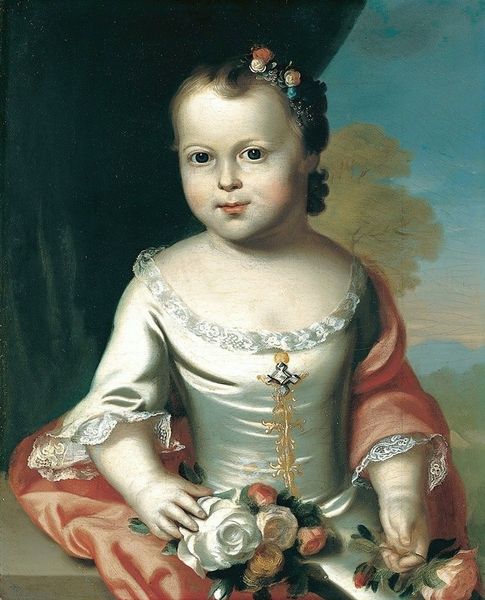
Grand Duke Alexander Nikolaevich (future Tsar Alexander II of Russia) with His Younger Sister, Grand Duchess Maria Nikolaevna 1821
0:00
0:00
painting, oil-paint
#
portrait
#
narrative-art
#
painting
#
oil-paint
#
group-portraits
#
romanticism
#
genre-painting
#
academic-art
Copyright: Public domain
Editor: This painting, rendered in oils by George Dawe in 1821, portrays Grand Duke Alexander Nikolaevich, who would later become Tsar Alexander II of Russia, alongside his younger sister, Grand Duchess Maria Nikolaevna. It’s striking how much detail went into the fabrics of their clothing. What catches your eye when you look at it? Curator: What I find compelling is how this image functions as both a record of the Romanovs and a performance of imperial power through the display of material wealth. Look at the way lace is painted; the very finest linen threads spun into elaborate patterns and then embellishing children's garments, normally functional clothes rendered as excessive displays of labor, production and luxury. What does this portrait tell us about consumption during that time? Editor: It emphasizes that access to these elaborate materials was certainly not common! Does the way these clothes were produced speak to social inequalities in any way? Curator: Absolutely. The children's clothing underscores the vast disparities of wealth within Russia. It showcases the exploitation inherent in acquiring the raw materials – the cotton from the Americas, for example – then its production as spun thread, and lastly as fabric, underscoring power dynamics present from colonial systems, agriculture to fashion itself. What does the act of portraying these children this way accomplish for the monarchy? Editor: I guess it conveys an image of refinement, while distancing them from the labor involved in the production of luxury goods. It makes me think about how artistic representation reinforces those class divisions. Curator: Precisely! By fixating on the portrait's aesthetic value, we might miss its entanglement with production processes and the global economic realities they represent. It’s crucial to investigate the painting's material construction and socioeconomic ramifications. Editor: It's like, you know, thinking about what's *behind* the image itself. I'll definitely keep a closer eye on details like fabrics and production when I look at art from now on. Thanks! Curator: That’s excellent. Viewing art through a materialist lens really encourages questioning these structures.
Comments
No comments
Be the first to comment and join the conversation on the ultimate creative platform.
